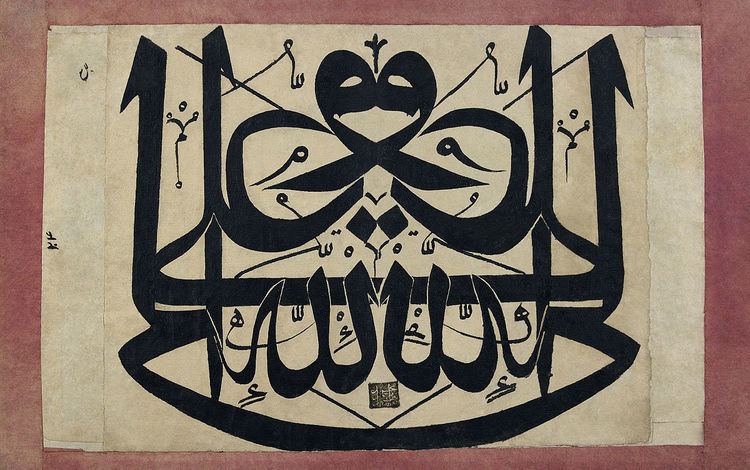 | ||
Hurufism (Arabic: حروفية hurufiyya, adjective form hurufi literal meaning "letters" [of the alphabet]) was a Sufi doctrine, which was born in Azerbaijan and spread in areas of western Persia and Anatolia in later 14th – early 15th century.
Contents
Foundation
The founder and spiritual head of the Hurufi movement was Azerbaijanian Fażlu l-Lāh Astar-Ābādī, also called Nāimī (1340–94). Born in Astrabad, Iran, he was strongly drawn to Sufism and the teachings of Mansur Al-Hallaj and Rumi at an early age. In the mid-1370s Nāimī started to propagate his teachings all over Persia and Azerbaijan. While living in Tabriz, Fazlallah gained an elite following in the Jalayirid court, where the writing of his main work, Jawidan-Al-Kabir, allegedly took place. At that time he was still in the mainstream of Sufi tradition. Later, he did move towards more esoteric spirituality, and, failing to convert Timur, was executed in 1394 near Alinja castle in Nakhchivan by the ruler's son Miran Shah. The uprising of Hurufis, who had gathered a large following, was crushed in Azerbaijan, but the popular movement survived for another decade or so in different guises.
Key elements
According to Fazlallah, the key to open seventh sealed book, the Qur'an, is a kabbalistic system of letters that is expounded by later Hurufis in the Hidayat-nama, Jawidan and in the Mahram-Nama. The Universe is eternal and moves by rotation. God's visage is imperishable and is manifest in Man, the best of forms — zuhur kibriya. God is incarnated in every atom. Hurufis considered Fażlu l-Lāh, a manifestation of God's force after Adam, Moses and Muhammad. God is also embodied in words and the 28 letters of the Arabic alphabet and the 32 letters of Persian one are the basis for love and beauty in the world. Seven is a key number corresponding to noble parts of the face, the verses of Al-Fatiha and verbal confession of faith. Man is a supreme copy of the divine and the key to haqiqa.
According to R. N. Frye's Cambridge History of Iran, Hurufism was an expression of Ismailism in its mystical identification of human figure, but differed in its recognition of haqiqa in the substance of letters rather than in the person of the Imam.
Impact
After his death Nāimī's ideas were developed and propagated by ‘Alī ‘Imādu d-Dīn Nasīmī and Ali-ul A'la in Azerbaijan and Seyid Ishag in Turkey. Poet Nasīmī (?–1417) and other Hurufis make kabbalistic tendencies subordinate to mystic concepts of Sufism, and specifically those of Mansur Al-Hallaj, who was another great influence on Nasīmī.
Through Nasīmī's poetry Hurufi ideas influenced, in different degrees, people like Niyaz-i Misri, Fuzuli, Habibi, Khatai (Ismail I), and Rushani. The Bektashi order that still is active in Anatolia and the Balkans was a repository for the Hurufi teachings and writings. In fact, many of Hurufi manuscripts that are existent today were safeguarded in the libraries of Bektashi lodges. Hurufi terms and concepts permeate Bektashi poetry. Gül Baba provided an extensive compendium of Hurufi ideas in The Key to the Unseen.
The Shattari tariqah is a contemporary repository of Hurf-e-Muqattiyat (secrets of the alphabets).
